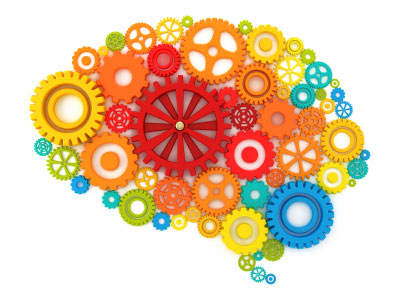Observation
More to Motor Imagery Than Mental Simulation
 The human brain is a powerful simulation machine. Sports professionals and amateurs alike are well aware of the advantages of mentally rehearsing a movement prior to its execution and it is not surprising that the phenomenon, known as motor imagery, has already been extensively investigated. However, a new study published in the September 2010 issue of Cortex suggests that there may be more to motor imagery than previously thought. A group of neuroscientists in Italy have shown that the brain is able to invent creative new solutions in order to perform impossible actions.
The human brain is a powerful simulation machine. Sports professionals and amateurs alike are well aware of the advantages of mentally rehearsing a movement prior to its execution and it is not surprising that the phenomenon, known as motor imagery, has already been extensively investigated. However, a new study published in the September 2010 issue of Cortex suggests that there may be more to motor imagery than previously thought. A group of neuroscientists in Italy have shown that the brain is able to invent creative new solutions in order to perform impossible actions.
Researchers from two Rome universities (Tor Vergata, La Sapienza) and a rehabilitation institution (IRCCS Fondazione Santa Lucia) teamed up to investigate the complexity of motor imagery processes. Close similarities are thought to exist between the brain structures that support imagined and real actions, but findings from neuropsychological research have tended to contradict this. “In fact, if brain damage disrupts [real] motor functions, simulated actions may or may not show a similar impairment,” notes Elena Daprati, one of the study’s authors. “We took these inconsistencies as a hint that motor imagery might be a more complex phenomenon than previously understood and reasoned that people involved in rehabilitation should be made aware of this issue for approaches based on mental practice to be successfully applied to patients.”
The researchers proposed three tasks — commonly assumed to rely on motor imagery — to stroke patients with varying degrees of motor impairment. All patients performed correctly, but only those with milder motor impairments appeared to have used mental simulation during the tasks. Patients with severe impairments, especially of dominant limbs, avoided mentally mimicking the actions that they could no longer perform, instead using alternative mental strategies to complete the tasks. “These findings indicate that the notion of motor imagery should be expanded to include processes that are not limited to simulation but also rely on creative operations,” say the researchers. “These alternative modes would support the brain’s creative potential to invent novel motor patterns, tools and machinery, and, evidently, the ability to imagine what may never be achieved in reality.”





APS regularly opens certain online articles for discussion on our website. Effective February 2021, you must be a logged-in APS member to post comments. By posting a comment, you agree to our Community Guidelines and the display of your profile information, including your name and affiliation. Any opinions, findings, conclusions, or recommendations present in article comments are those of the writers and do not necessarily reflect the views of APS or the article’s author. For more information, please see our Community Guidelines.
Please login with your APS account to comment.